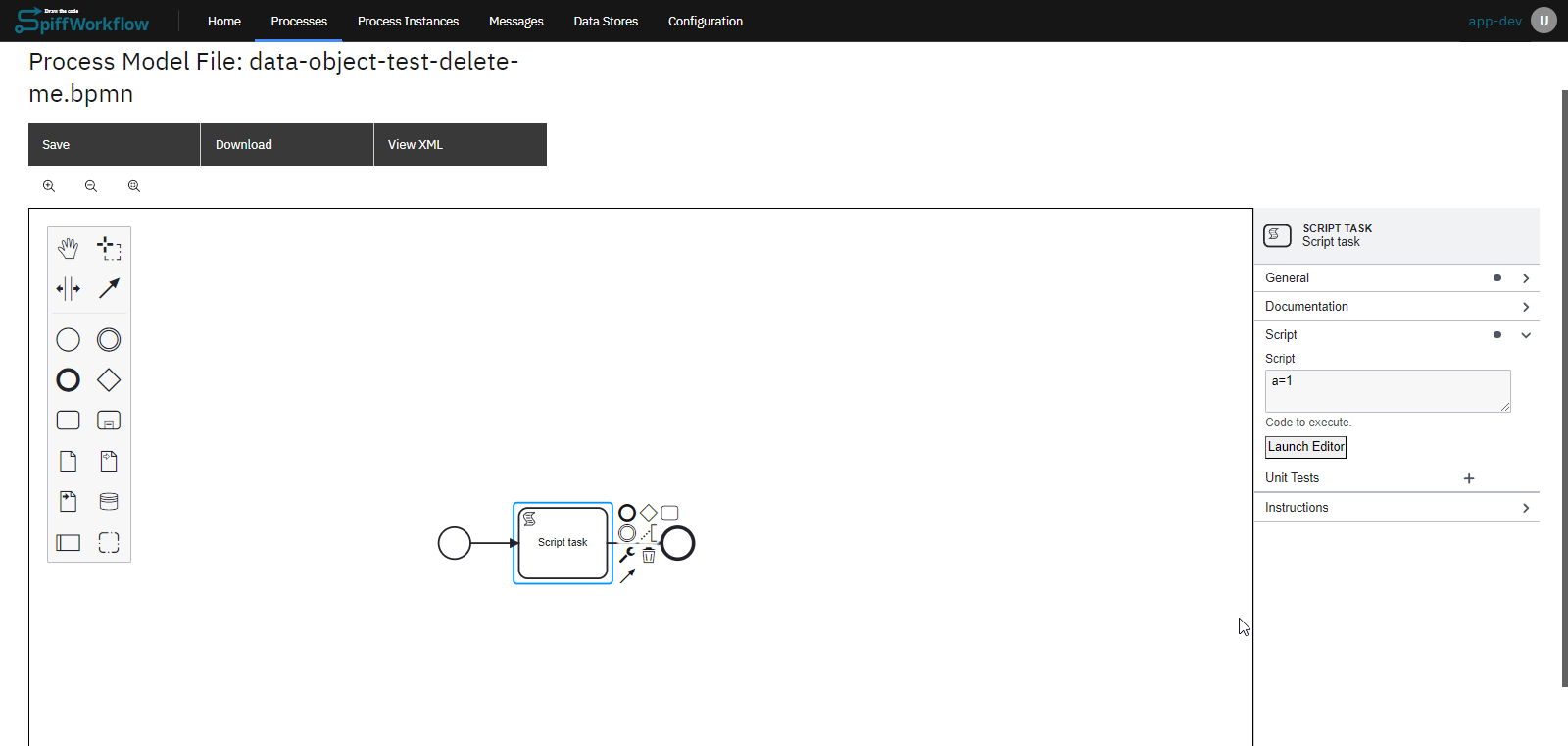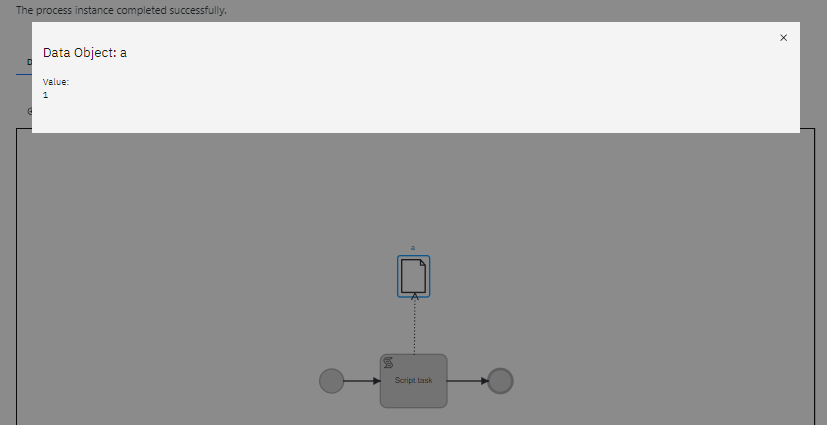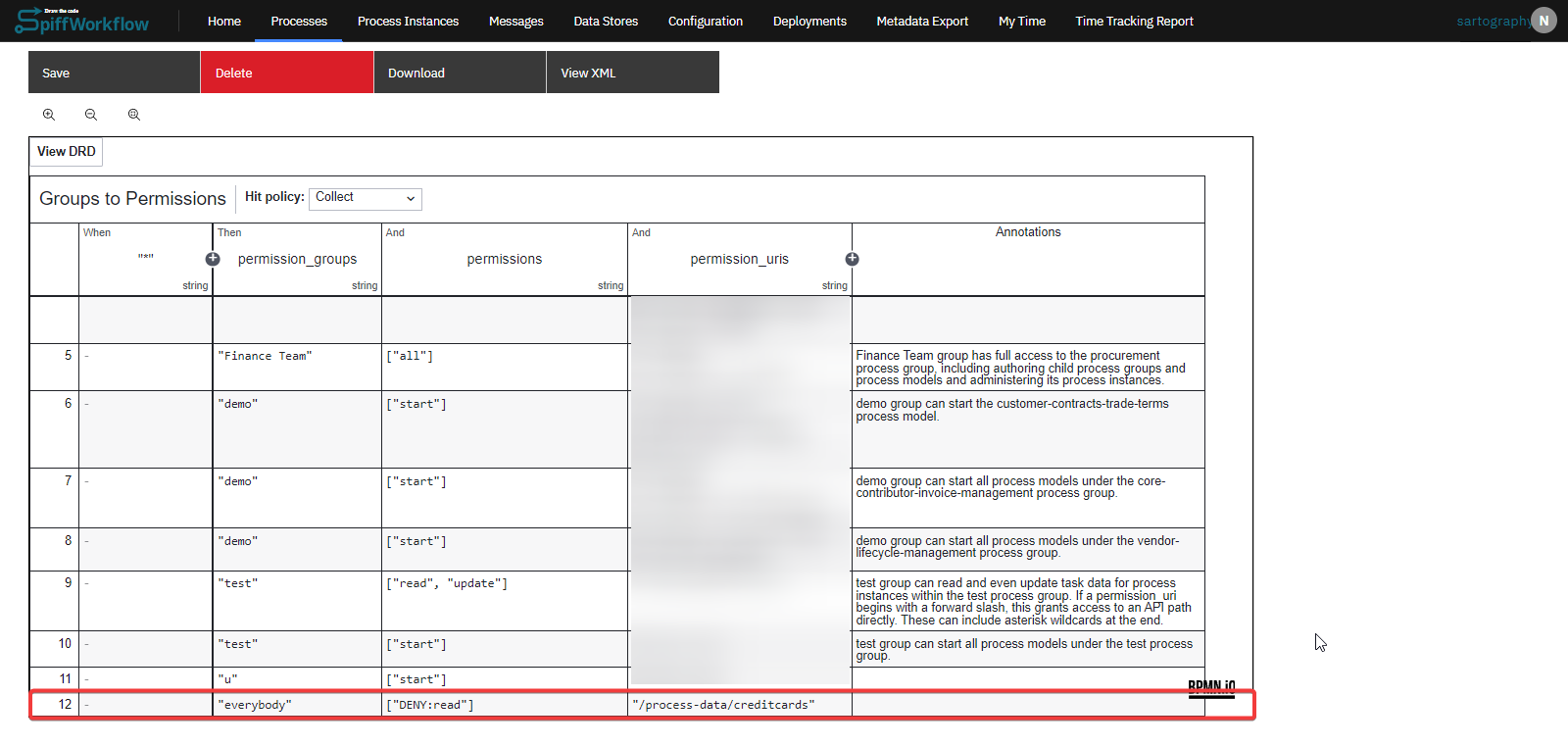Handling Sensitive Data Using Data Store
Introduction
Handling sensitive data, such as credit card numbers and passwords, requires careful management to ensure security and privacy. This documentation outlines the process of creating and managing sensitive data objects within SpiffWorkflow, along with setting appropriate permissions.
Process Breakdown
1. Identifying Sensitive Data
Determine what constitutes sensitive data within your workflow. This could include personal information, financial details, or confidential business information.
2. Data Object Creation and Script Task Integration
Script Task Setup: Develop a script task that interacts with the data object. The script should be designed to handle the sensitive data securely, ensuring it’s not exposed or logged inadvertently.
Data Object Creation: Create a data object in the workflow to store the sensitive data. This object acts as a container for the data, separating it from the main workflow logic.
3. Assigning Data Categories
Categorization: Assign a specific category to the data object that reflects its sensitive nature. For example, categories like
confidentialorprivateor the name of the field can be used.
4. Implementing Access Controls
Permission Rules: Establish permission rules, using a Decision Model and Notation (DMN) table or another mechanism as described under Admin and Permissions. This step involves specifying who can access the sensitive data.
Access Restrictions: Define the access level (e.g., read, write, deny) for different user groups or roles. For instance, you might restrict read access to certain groups while denying it to others.
URL-Based Permissions: Use URL patterns to enforce permissions. For example, a URL pattern like
/process-data/confidential/*can be used to control access to all data objects categorized as confidential.
Example: Steps to Handle Sensitive Data
1. Creating a Script Task with Sensitive Data
Initial Setup: Start by creating a script task where the script sets a variable (e.g.,
a=1). This variableacould represent sensitive data like a credit card number.Execution: Run the tasks to observe the value of
a.
2. Converting to a Data Object
Data Object Creation: Create a data object and name it (e.g.,
a). Link this data object to the script task and set the data object ID toa.Assign a Category: Assume the data object represents a credit card number. Assign a category to this data object, such as
creditcards.Visibility: The credit card data is visible until permissions are set to restrict access.

Process Execution: Upon running the process, the value of the data object will be
1.
3. Setting Permissions with DMN Table
Access Control: To control who can see the credit card data, you could set permissions in a DMN Table.
Permission Configuration: Set the following permissions:
permission_groupsto"everybody"permissionsto"DENY:read"permission_urlsto"/process-data/creditcards/"
4. Implementing Restricted Access
With these permissions, access to the credit card data is denied to everyone, ensuring that no unauthorized individuals can view this sensitive information.
By following these steps, SpiffWorkflow users can securely handle sensitive data within their processes. The combination of data objects, categorization, and precise permission settings ensures that sensitive information like credit card numbers is protected and accessible only to those with the necessary authorization.